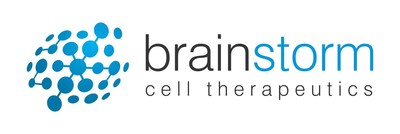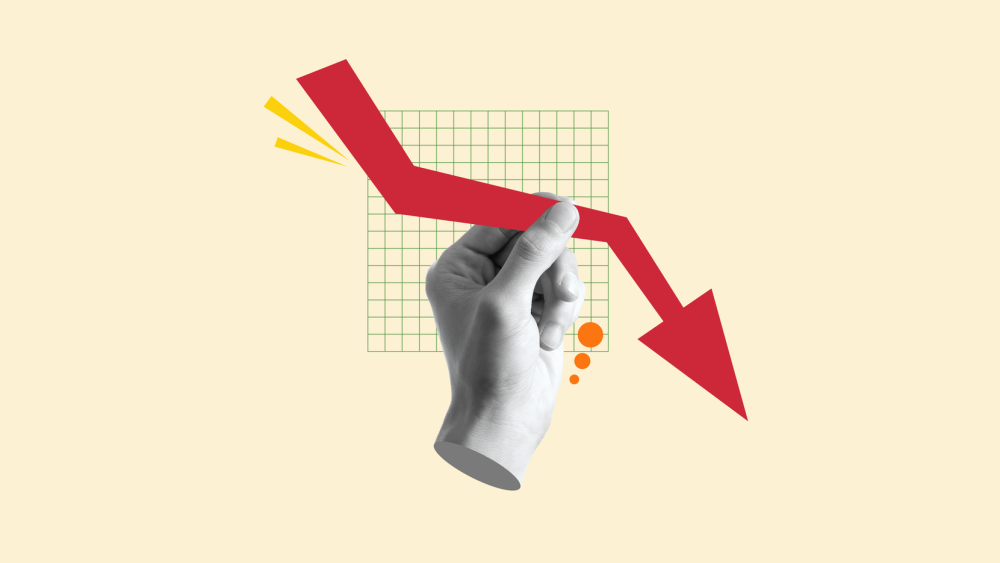BrainStorm Cell Therapeutics Inc. announced the presentation of a poster with new analyses from NurOwn’s placebo-controlled Phase 3 amyotrophic lateral sclerosis trial that account for limitations in the Revised ALS Functional Rating Scale and provide evidence of a clinically meaningful treatment effect.
New post-hoc analyses that account for ALSFRS-R floor effects add to the robust body of evidence supporting a clinically meaningful treatment effect with NurOwn® in ALS
NEW YORK, Nov. 7, 2022 /PRNewswire/ -- BrainStorm Cell Therapeutics Inc. (NASDAQ: BCLI), a leading developer of cellular therapies for neurodegenerative diseases, today announced the presentation of a poster with new analyses from NurOwn’s placebo-controlled Phase 3 amyotrophic lateral sclerosis (ALS) trial that account for limitations in the Revised ALS Functional Rating Scale (ALSFRS-R) and provide evidence of a clinically meaningful treatment effect. The poster, titled, ‘Further Analysis of NurOwn Phase 3 Data Based on Baseline ALSFRS-R Status Clarifies Treatment Outcomes’ was presented at the 21st Annual NEALS Meeting, taking place in Clearwater Beach, FL and virtually. The presenting authors of the poster are Stacy Lindborg PhD, Executive Vice President and Chief Development Officer at BrainStorm and Merit Cudkowicz, MD, MSC, Chief of Neurology at Massachusetts General Hospital, Julieanne Dorn Professor of Neurology at Harvard Medical School, and Director of the Sean M. Healey & AMG Center for ALS at Massachusetts General Hospital.

A copy of the poster is available on the Events & Presentation page of Brainstorm’s corporate website.
“We are pleased to be sharing this confirmatory evidence of NurOwn’s clinically-meaningful effects with the ALS community at this year’s NEALS meeting,” stated Dr. Stacy Lindborg. “Our confidence in NurOwn continues to grow as we conduct further analysis of the Phase 3 data. Two orthogonal approaches designed to account for ALSFRS-R’s inability to accurately assess disease progression in patients with advanced ALS demonstrate a statistical trend towards a clinically meaningful treatment effect with NurOwn, and one that is consistent with the pre-specified subgroup of participants with less advanced ALS at baseline (ALSFRS-R ≥ 35). We believe this consistency, together with the biomarker data we reported last month at the ALS ONE Symposium, adds weight to the important conclusions we can draw from our new analyses.”
Dr. Cudkowicz commented, “We have learned a lot about both the clinical and biological (biomarker) effects of NurOwn in people with ALS. This presentation provides new insights into the NurOwn phase 3 trial demonstrating the consistency of treatment effect with NurOwn. We were honored to present these results at the NEALS annual conference.”
Poster Highlights
NurOwn Phase 3 Trial Patient Population and ALSFRS-R Floor Effect
- As previously described, the mean ALSFRS-R score of participants in NurOwn’s Phase 3 trial was 30.9 (± 6.3), which is substantially lower than the mean ALSFRS-R score of participants in other late-stage ALS trials. In addition, NurOwn’s Phase 3 trial included participants with individual ALSFRS-R item scores of zero at baseline, meaning further deterioration could not be measured on these items and resulting in a slowing of ALS decline due to a floor effect of the ALSFRS-R that could result in a misclassification of the primary endpoint. This floor effect impacted all analyses based on ALSFRS-R, including those related to the trial’s pre-specified primary endpoint (a responder analysis based on the percentage of participants with ≥1.25 points/month ALSFRS-R improvement in slope post-treatment vs. pre-treatment), which was not met.
Pre-specified Subgroup Analyses
- As previously announced, a treatment difference favoring NurOwn over placebo was observed in a pre-specified subgroup of participants with less advanced disease (ALSFRS-R baseline score of ≥35) across both the primary endpoint and a key secondary endpoint (average ALSFRS-R change from baseline to week 28). The difference between NurOwn and placebo for this key secondary endpoint was nominally statistically significant (p=0.050). Moreover, the clinical response observed with NurOwn and placebo in this pre-specified subgroup was consistent with historical data utilized in the NurOwn trial’s power calculations.
Post-hoc Analyses to Account for ALSFRS-R Floor Effects
- To better understand the true effect of treatment with NurOwn compared to placebo, two post-hoc sensitivity analysis methods were used to identify and remove participants from analyses that were most likely to be impacted by the floor effect. These methods were: (1) Total Score Threshold (TST), which removed participants with ALSFRS-R scores ≤ 25; and (2) Item Level Threshold (ITL), which removed participants with a baseline score of 0 or 1 in at least 5 of 6 of the ALSFRS-R’s Fine and Gross Motor scale items. Applying the TST and ITL sensitivity analysis methods resulted in the exclusion of 23% (n=44) and 16% (n=30) of trial participants from analyses, respectively.
- Both the TST and ILT sensitivity analysis methods show that, after controlling for the impact of the ALSFRS-R floor effect, participants treated with NurOwn had a higher rate of clinical response (primary endpoint) and less function lost across 28 weeks (secondary endpoint), compared to placebo. Additional post-hoc analyses published for the secondary endpoint (average change from baseline in ALSFRS-R), showed a statistically significant benefit following treatment with NurOwn in all subgroups with ALSFRS-R baseline total score of at least 26 to 35 (p≤0.050). These analyses were included in a correction made to the Muscle and Nerve publication (December 2021) and were broadly discussed with the ALS community for the first time at the NEALS meeting.
Biomarker Data
- Biomarker data from participants in the Phase 3 trial recently presented at the ALS ONE Research Symposium showed consistent patterns across biomarkers in both participants with more advanced ALS at baseline and those with less advanced disease. This suggests that NurOwn had similar biological activity on all participants in the trial, and that participants may also be benefiting from treatment clinically despite the inability of ALSFRS-R to accurately assess these benefits in certain participants due to a floor effect.
Phase 3 NurOwn Study Design
The Phase 3 NurOwn trial was a multi-center, placebo-controlled, randomized, double-blind trial designed to evaluate the safety and efficacy of repeat doses of NurOwn in 189 ALS participants. It was conducted at six centers of excellence: University of California Irvine (Dr. Namita Goyal); Cedars-Sinai Medical Center (Dr. Matthew Burford, Dr. Robert Baloh); California Pacific Medical Center (Prof. Robert Miller, Dr. Jonathan Katz); Massachusetts General Hospital (Prof. Merit Cudkowicz, Dr. James Berry); University of Massachusetts Medical School (Prof. Robert Brown) and Mayo Clinic (Prof. Anthony Windebank, Dr. Nathan Staff). Potential participants with ALS were screened during an 18-week run-in period and those who were rapid progressors (defined as participants with at least a 3-point decrease in ALSFRS-R score during the run-in period) were randomized 1:1 to receive three intrathecal injections (8 weeks between each injection) of NurOwn or placebo. Participants were followed for 28 weeks after treatment. The primary endpoints of the trial were safety assessments and a responder analysis of the rate of decline in ALSFRS-R score over 28 weeks, where response was defined as participants with a 1.25 points/month improvement in the post-treatment versus pre-treatment slope in ALSFRS-R at 28 weeks following the first treatment. Secondary endpoints included the percentage of participants with disease progression halted or improved, ALSFRS-R change from baseline, combined analysis of function and survival, slow vital capacity, tracheostomy-free survival, overall survival and cerebrospinal fluid biomarker measurements. For more information on the trial, visit https://clinicaltrials.gov/ct2/show/NCT03280056.
The NurOwn® technology platform (autologous MSC-NTF cells) represents a promising investigational therapeutic approach to targeting disease pathways important in neurodegenerative disorders. MSC-NTF cells are produced from autologous, bone marrow-derived mesenchymal stem cells (MSCs) that have been expanded and differentiated ex vivo. MSCs are converted into MSC-NTF cells by growing them under patented conditions that induce the cells to secrete high levels of neurotrophic factors (NTFs). Autologous MSC-NTF cells are designed to effectively deliver multiple NTFs and immunomodulatory cytokines directly to the site of damage to elicit a desired biological effect and ultimately slow or stabilize disease progression.
About BrainStorm Cell Therapeutics Inc.
BrainStorm Cell Therapeutics Inc. is a leading developer of innovative autologous adult stem cell therapeutics for debilitating neurodegenerative diseases. The Company holds the rights to clinical development and commercialization of the NurOwn® technology platform used to produce autologous MSC-NTF cells through an exclusive, worldwide licensing agreement. Autologous MSC-NTF cells have received Orphan Drug designation status from the U.S. Food and Drug Administration (FDA) and the European Medicines Agency (EMA) for the treatment of amyotrophic lateral sclerosis (ALS). BrainStorm has completed a Phase 3 pivotal trial in ALS (NCT03280056); this trial investigated the safety and efficacy of repeat-administration of autologous MSC-NTF cells and was supported by a grant from the California Institute for Regenerative Medicine (CIRM CLIN2-0989). BrainStorm completed under an investigational new drug application a Phase 2 open-label multicenter trial (NCT03799718) of autologous MSC-NTF cells in progressive MS and was supported by a grant from the National MS Society (NMSS).
Safe-Harbor Statement
Statements in this announcement other than historical data and information, including statements regarding future clinical trial enrollment and data, constitute “forward-looking statements” and involve risks and uncertainties that could cause BrainStorm Cell Therapeutics Inc.'s actual results to differ materially from those stated or implied by such forward-looking statements. Terms and phrases such as “may,” “should,” “would,” “could,” “will,” “expect,” “likely,” “believe,” “plan,” “estimate,” “predict,” “potential,” and similar terms and phrases are intended to identify these forward-looking statements. The potential risks and uncertainties include, without limitation, BrainStorm’s need to raise additional capital, BrainStorm’s ability to continue as a going concern, prospects for future regulatory approval of BrainStorm’s NurOwn® treatment candidate, the success of BrainStorm’s product development programs and research, regulatory and personnel issues, development of a global market for our products and services, the ability to secure and maintain research institutions to conduct our clinical trials, the ability to generate significant revenue, the ability of BrainStorm’s NurOwn® treatment candidate to achieve broad acceptance as a treatment option for ALS or other neurodegenerative diseases, BrainStorm’s ability to manufacture and commercialize the NurOwn® treatment candidate, obtaining patents that provide meaningful protection, competition and market developments, BrainStorm’s ability to protect our intellectual property from infringement by third parties, heath reform legislation, demand for our services, currency exchange rates and product liability claims and litigation; the impacts of the COVID-19 pandemic on our clinical trials, supply chain, and operations; and other factors detailed in BrainStorm’s annual report on Form 10-K and quarterly reports on Form 10-Q available at http://www.sec.gov. These factors should be considered carefully, and readers should not place undue reliance on BrainStorm’s forward-looking statements. The forward-looking statements contained in this press release are based on the beliefs, expectations, and opinions of management as of the date of this press release. We do not assume any obligation to update forward-looking statements to reflect actual results or assumptions if circumstances or management’s beliefs, expectations or opinions should change, unless otherwise required by law. Although we believe that the expectations reflected in the forward-looking statements are reasonable, we cannot guarantee future results, levels of activity, performance, or achievements.
CONTACTS
Investor Relations:
John Mullaly
LifeSci Advisors, LLC
Phone: +1 617-429-3548
jmullaly@lifesciadvisors.com
Media:
Lisa Guiterman
lisa.guiterman@gmail.com
Logo: https://mma.prnewswire.com/media/1166536/BrainStorm_Logo.jpg
![]() View original content:https://www.prnewswire.com/news-releases/brainstorm-cell-therapeutics-presents-new-analyses-from-nurowns-phase-3-als-trial-at-the-21st-annual-neals-meeting-301670012.html
View original content:https://www.prnewswire.com/news-releases/brainstorm-cell-therapeutics-presents-new-analyses-from-nurowns-phase-3-als-trial-at-the-21st-annual-neals-meeting-301670012.html
SOURCE BrainStorm Cell Therapeutics Inc.
Company Codes: Berlin:GHDN, Dusseldorf:GHDN.DU, Munich:GHDN, NASDAQ-SMALL:BCLI, Frankfurt:GHDN, Stuttgart:GHDN




